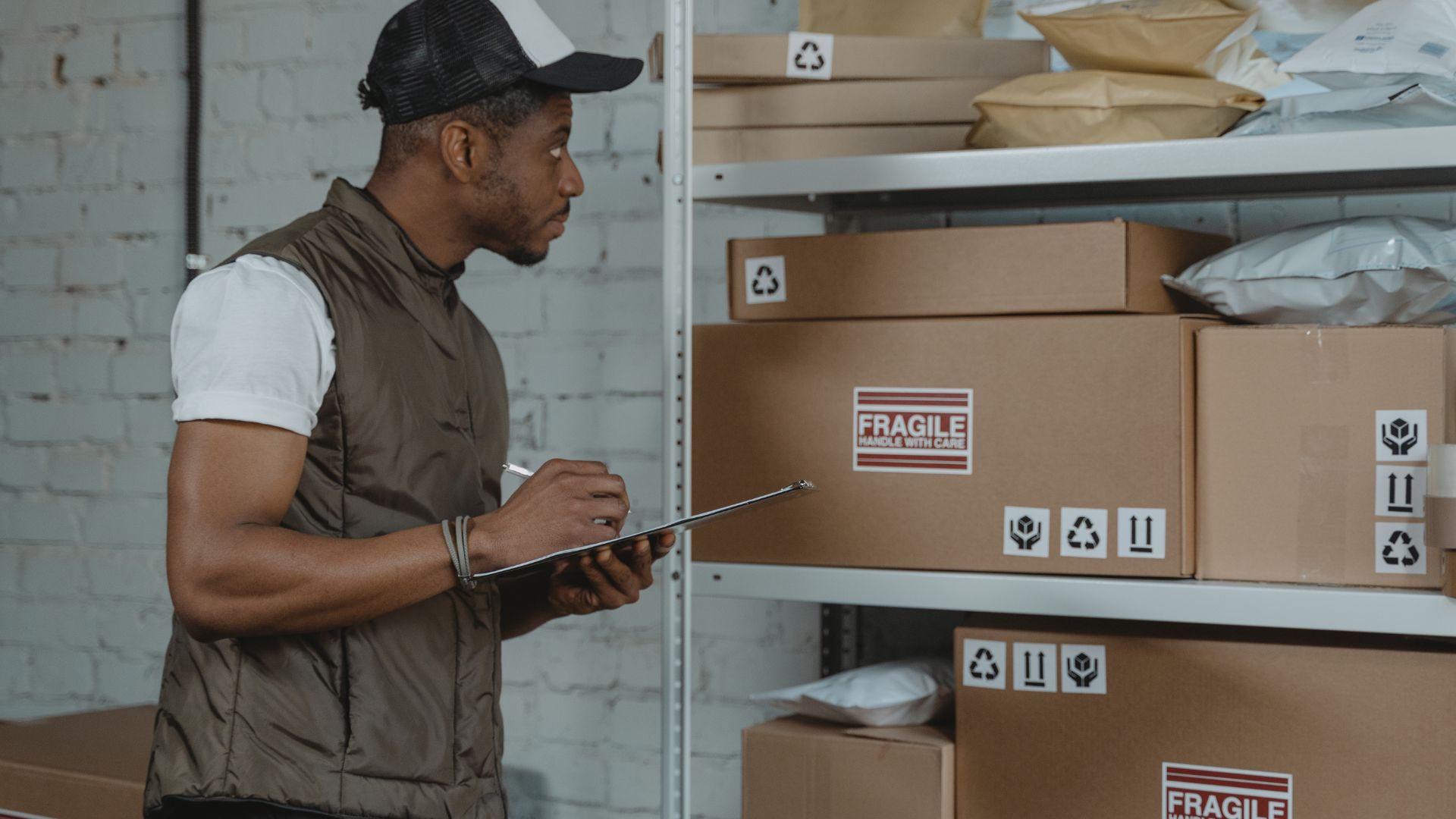The art of package handling is nothing short of a science. It’s the linchpin that holds the entire process together, ensuring that parcels reach their destinations in pristine condition, and customers are left with smiles of satisfaction.
This comprehensive guide comprises seven invaluable tips for package handling. It is your key to mastering the intricate world of package handling.
1. Prioritize Safety First
Safety, they say, is not just a slogan, but a way of life. In the context of package handling, safety should be a mantra etched into the core of your operations. Why? Well, let’s explore:
- Invest in Proper Safety Gear: Safety isn’t merely a checkbox; it’s an attire. Equip your team with safety gear that reads professionalism. Gloves shield their hands from abrasions and cuts, while safety shoes not only protect toes but also provide stability on uneven terrain. Donning reflective vests adds an extra layer of visibility, especially during nighttime deliveries.
- Training and Education: Safety is a shared responsibility. Engage in regular training sessions that educate your team about the nuances of safe package handling. They should know the ABCs of proper lifting techniques, emphasizing the golden rule: bend the knees, keep the back straight, and minimize the risk of injuries.
- Secure Packaging: The responsibility of safe package handling extends to your customers. Encourage them to pack their items securely, using appropriate materials. Adequate cushioning, sturdy boxes, and sealing techniques can prevent items from jostling during transit and suffering damage.
2. Efficient Labeling and Documentation
Efficiency is the name of the game, and a well-labeled package is your winning card. This means more than just slapping on an address sticker; it involves meticulous documentation.
- Barcode Technology: The marriage of technology and package handling is a boon. Barcode systems are your trusty sidekick, helping track and manage packages with precision. The process is seamless: each package is tagged with a unique barcode, allowing for real-time updates and reducing the margin of error.
- Digital Documentation: Say goodbye to paper clutter and embrace the digital age. Digital documentation allows for easy access to crucial information, reducing the chances of misplaced paperwork. It’s like having the entire package history at your fingertips.
- Labeling Standards: Chaos has no place in the package handling world. Set stringent labeling standards that make your packages easy to read and identify. A standard format for labels with essential information (such as sender details, recipient details, and handling instructions) ensures consistency and minimizes confusion.
3. Effective Sorting and Organization
Sorting and organization may not be the flashiest aspects of package handling, but they are the gears that make the system run smoothly.
- Automated Sorting Systems: For larger operations, automation is your best friend. Automated sorting systems categorize packages based on various criteria, such as destination, size, and weight. This reduces human errors and speeds up the sorting process, ensuring packages find their way into the correct delivery routes.
- Zone-Based Sorting: Organization matters, especially when dealing with a large volume of packages. Organize your sorting areas based on delivery zones or routes. This not only simplifies the process but also ensures packages are efficiently distributed and dispatched.
- Package Tracking: Package tracking isn’t just a feature; it’s a promise of transparency. Implement a robust tracking system that allows both your team and customers to monitor a package’s journey. It eliminates uncertainty, providing real-time updates and delivery estimates.
4. Proper Handling Techniques
Package handling is a craft in itself. The way a package is handled can determine its fate. Here’s how to handle them like a pro:
- Correct Lifting Methods: The backbone of package handling is lifting, and doing it right is imperative. Train your team in the art of proper lifting techniques. Remember the golden rule: bend the knees, not the back. This minimizes the risk of back injuries and ensures that heavy loads are moved safely.
- Fragile Item Handling: Not all packages are created equal. Differentiate between standard packages and fragile items. Handle fragile items with extra care. Use appropriate packaging materials like bubble wrap, foam, or peanuts to shield delicate contents from potential impact.
- Heavy vs. Light Packages: A heavy package is not a match for bare hands. Equip your team with the right tools for the job. Trolleys or dollies are essential for moving heavyweight packages efficiently, preventing strain and accidents.
5. Climate Control Considerations
The elements can be a formidable adversary in the world of package handling. Extreme temperatures and adverse weather conditions can wreak havoc on package integrity. Consider these climate control tips:
- Weatherproof Packaging: Mother Nature can be unpredictable, and her wrath might lead to water-damaged parcels. Encourage customers to use weather-resistant packaging for sensitive items. Rain, snow, or shine, these packages will endure.
- Temperature-Controlled Storage: In extreme weather conditions, temperature-controlled storage is a lifesaver. It’s the difference between frozen electronics and warm, functioning gadgets. Provide this option to customers to ensure their packages remain unscathed, regardless of the weather outside.
- Climate Monitoring: Ensure that your storage facilities are equipped with climate monitoring systems. These systems maintain packages within the recommended temperature range, protecting items that are sensitive to heat or cold. It’s a small step that prevents potential disasters.
6. Delivery Route Optimization
Package handling doesn’t stop at the loading bay; it extends to the open road. The efficiency of your delivery routes can save time, fuel and reduce the risk of package mishandling:
- GPS and Route Planning Software: Thanks to technology, the days of unfolding paper maps are long gone. Advanced GPS and route planning software are your guiding stars. They optimize delivery routes, ensuring that packages reach their destinations via the fastest and most cost-effective paths.
- Traffic Updates: In the ever-changing landscape of urban traffic, knowledge is power. Stay updated with real-time traffic information. Adjust routes as needed to avoid congestion, road closures, or accidents, ensuring packages are delivered on time.
- Delivery Time Windows: Time is precious, and so is your customers’ time. Communicate delivery time windows to customers, allowing them to plan accordingly. Whether it’s a morning, afternoon, or evening slot, this simple gesture ensures someone is available to receive the package.
7. Customer Communication
Transparency and effective communication with customers are the cornerstones of exceptional service. This is how you can make it happen:
- Notification Systems: The key to customer satisfaction is keeping them in the loop. Implement automated notification systems that update customers about the status of their deliveries. Whether it’s a “Your package is out for delivery” message or a confirmation of delivery, these notifications instill confidence and eliminate uncertainty.
- Customer Support: Behind every package, there’s a human story. Provide a reliable customer support channel for inquiries, complaints, and assistance with package-related issues. A prompt response and a helpful attitude can turn a disgruntled customer into a loyal one.
- Feedback Collection: Improvement is a continuous journey. Encourage customers to provide feedback on their delivery experiences. Constructive feedback helps you identify areas for enhancement and ensures that your services align with customer expectations.
Frequently Asked Questions (FAQs)
1. Is it essential for customers to insure their packages?
- While not mandatory, package insurance is a wise precaution. It provides an additional layer of protection in case of loss or damage during transit. Many delivery agencies offer insurance as an optional service, allowing customers to choose coverage that matches their needs and the value of their items.
2. How can I track my package’s location in real-time?
- Tracking a package’s journey in real-time has become a standard feature for most modern delivery agencies. When you book a delivery, you receive a unique tracking number. Simply input this number on the agency’s website or app, and you’ll gain access to up-to-the-minute information on your package’s whereabouts and estimated delivery time.
3. What should I do if my package arrives damaged?
- If, unfortunately, your package arrives in a damaged state, it’s crucial to act swiftly. Contact the delivery agency immediately and provide photographic evidence of the damage. Most agencies have a well-established claims process to address such situations and compensate for damaged packages.
Conclusion
Mastering the art of package handling is akin to conducting an orchestra. It’s about synchronizing various elements to create a harmonious and reliable delivery experience.
By placing safety at the forefront, leveraging technology, streamlining operations, and focusing on customer communication, you’re poised to stand out in the competitive realm of package delivery.
Remember, delivering packages isn’t just about moving goods from one place to another; it’s about delivering trust, reliability, and a promise of satisfaction.
Stay committed to these seven tips, and you’ll ensure that packages continue to arrive at their destinations, not just intact but with a sense of confidence in your services.














What do you think?
It is nice to know your opinion. Leave a comment.